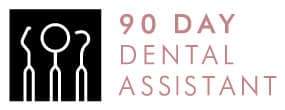A dental assistant is the doctor’s right hand and the backbone of any dental practice. The national average wage for dental assistants in the United States is $46,540, according to the BLS.
Primary Responsibilities

The Significance of a Dental Assistant
A dental assistant significantly impacts a dental office’s functioning and contributes to the overall patient experience. Here’s why:
Patient Care Enhancement:
Dental assistants significantly improve the quality of patient care. By making patients feel comfortable and well-informed, they transform a routine dental visit into a positive experience.
Office Efficiency:
Dental assistants enhance office efficiency by handling numerous administrative and clinical tasks. This frees up the dentist to focus on their primary task — treating patients.
Promoting Dental Health:
Dental assistants often educate patients about proper oral hygiene practices. This advice can greatly improve a patient’s dental health and overall wellness.
How to Become a Dental Assistant
Education:
Most states don’t have any educational requirements to become a dental assistant. Some entry-level dental assistant positions require a high school diploma or GED. Many dental assistants complete a diploma or certificate program in dental assisting. 90 Day Dental Assistant offers an online course that can be completed on your own time and is designed to get you into your new career quickly. You will receive your certificate of completion once you complete your course!
On-the-Job Training:
In some cases, dental assistants are trained entirely on the job. This type of training typically involves direct instruction from the dentist or another experienced assistant in the practice.


